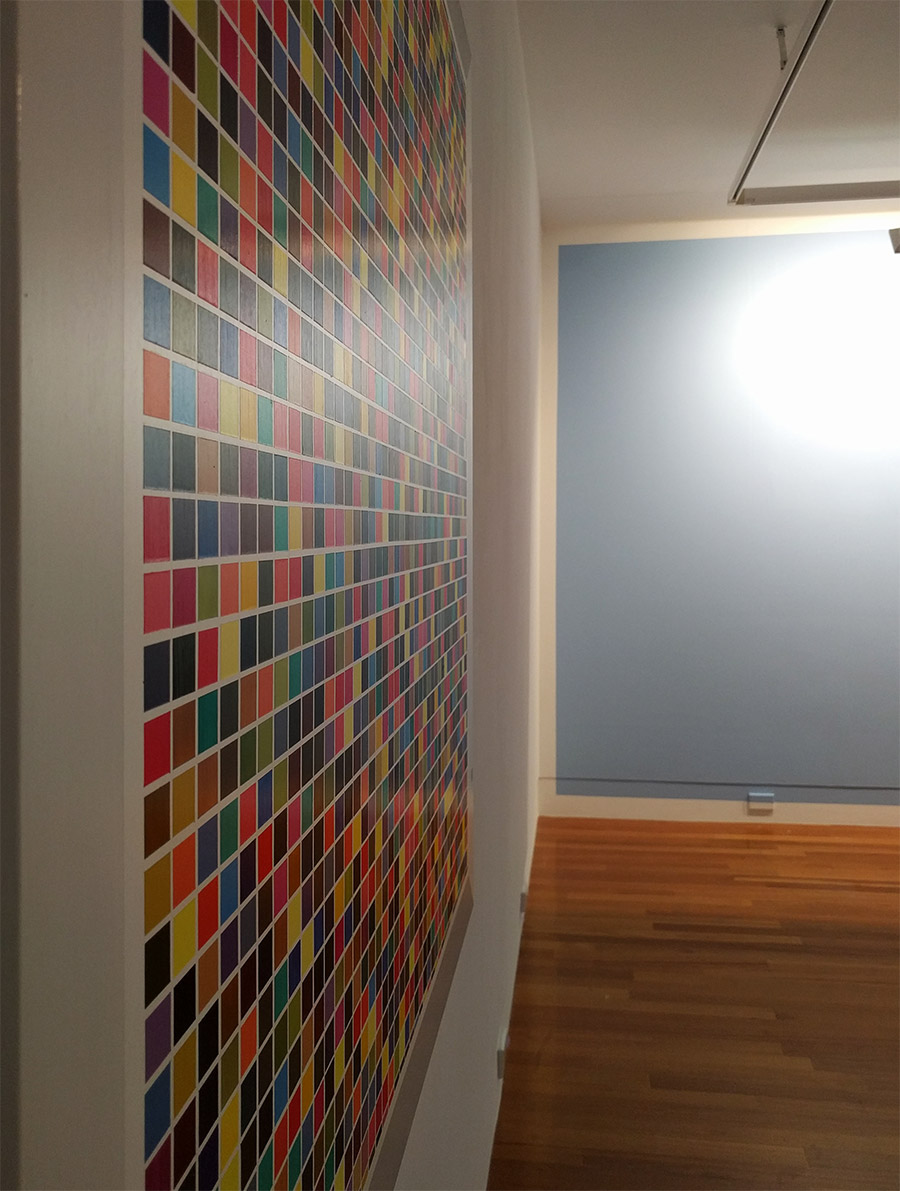A Slow Take and some discombobulation
 Slipped monochrome #2, 2017
Slipped monochrome #2, 2017
acrylic (Oxymoron) on wall
5720 × 2940mm
 Very modern, 2017
Very modern, 2017
acrylic on wooden panel
1180 × 1180mm
Since returning to Wellington from my adventures at Te Tuhi, life has been busy. No chance of post show blues as I’ve been juggling various elements of my different work lives. A day here, half a day there, all while getting ready to go overseas. I’ve been feeling a little discombobulated.
That said, one of the many things I really enjoyed about being in Auckland was the breaking of my usual routine. It’s all too easy to operate on automatic, acting without thought. Simple things from waking up, eating breakfast and starting the day were, out of necessity, quite different in Auckland. Since my return to Wellington I’ve been very reluctant to give up the space and opportunity provided by such changes of routine. I’m not entirely sure why this is though suspect it’s to do with the potential for change, for improvement of some sort and the possibility of something new.
Carrying this questioning of routine over to the studio and my practice, there’s the opportunity for curiosity – What’s become a habit? What would be interesting to shake up? What if I stopped doing that? What if I did it this way instead?
Meanwhile in the studio (on the table) are two neglected wooden panels waiting to be sealed and gessoed. I’m uncertain as to how to handle these – I know I want more small coloured squares on them but I’ve yet to make a decision about the edges. Are these works going to be all about the front surface, in which case I’ll leave the edges raw, or are they going to become something else, painting-objects of a sort with gessoed and painted edges.
I’ve no answers to any of these questions yet. Instead I’m trying to leave some space to see what may happen, to explore a little. Nothing feels fixed for the moment, instead it all has potential – and that’s rather interesting.
